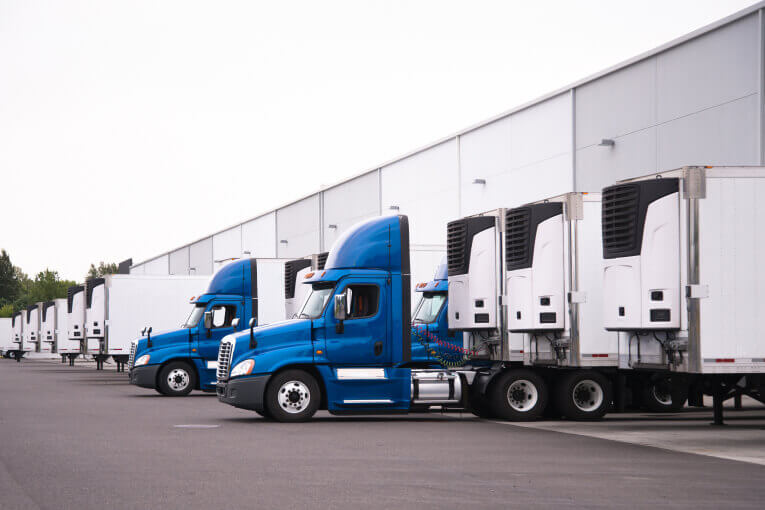10 Common Ways Truck Drivers Get Paid

Join Our
Trusted Network
Help protect your business with the load board you can rely on.
No matter how freeing the open road is, you still have to figure out how to get paid. If you’re new to the trucking industry, you might wonder, “How are truck drivers paid, and how much can I expect to make?” Exactly how much money you’ll earn depends on multiple factors, including your reputation, level of experience, region, and what you’re hauling. How truck drivers are paid is largely standardized across the industry, though there are many different structures. Here are the most common types of truck driver pay, including base pay and add-ons.
1. Pay per mile
How are tow truck drivers paid? One of the most common ways is by the mile. You’ll often see the rate listed as CPM, which stands for cents per mile. As the name suggests, this method pays you for the miles you drive. But there are different ways of calculating mileage pay.
- Practical mileage: Do you use Google Maps or another app to plan your drives? Practical mileage uses your truck’s onboard electronic logging device (ELD) in much the same way. The ELD calculates the most efficient route from your origin to your destination, and you get paid for that number of miles.
- Household goods (HHG) miles: Also known as ZIP code miles, this mileage is calculated based on the distance between the main post office ZIP codes in the origin and destination cities.
- Hub mileage, AKA actual miles: This is the simplest and often the most accurate way of calculating mileage. Your truck’s odometer is read before and after the trip, and you are paid for the difference.
- Sliding scales pay: This method offers an incentive for short-haul trips. The mileage is calculated according to one of the above methods, but the CPM rate is higher for shorter trips, often those covering fewer than 500 miles.
2. Pay per hour
How do truckers get paid if not by the mile? Companies with short in-state ranges (typically 150 miles or less) often pay by the hour. Grocery chains and some retailers and freight delivery services often use this pay structure. Truck drivers who work hourly jobs typically have responsibilities beyond driving, such as loading and unloading, customer interaction, and multiple stops per run. Overtime hours can also significantly increase your pay.
3. Salary
If you can find one, a salaried position offers consistency and predictable truck driver pay. These company drivers have a regular payday (usually, but not always, once a week) and a paycheck that doesn’t change. Your mileage and hours may vary, but your income typically stays the same for the duration of your contract.
4. Owner-operator pay: load sharing
Also known as “percentage of the load,” this is the most common pay structure for owner-operators, including those leasing their truck. This typically works out to be one of the best pay models in the industry. Rather than being paid based on mileage or time, drivers earn a negotiated percentage of either the gross or net revenue on each load. This model is especially attractive if the freight is particularly valuable or you’re driving short-to-medium distances.
5. Accessorial pay: going the extra mile
Think of accessorial pay as bonus pay for completing extra tasks beyond truck driving. It’s not usually an option for hourly drivers since their wage already accounts for those things. But if you’re paid by the mile, you might earn accessorial pay for jobs like:
- Loading and unloading trailers
- Shrinkwrapping pallets
- Tarping flatbed loads
- Operating a forklift or pallet jack
- Paying for tolls or border crossings
- After-hours deliveries
- Non-dock deliveries
These are just a few examples, so be sure to ask exactly what the extra duties are and how you will be compensated for them.
6. Stop pay
If you’re making several deliveries along your route, you might be eligible for stop pay. This compensates you for the time you spend at each facility. Stop pay can be extremely helpful since every minute you’re not on the road is time you’re not earning income from driving.
7. Detention (layover) pay

Similar to stop pay, detention or layover pay kicks in when you’re stuck at a facility instead of on the road. The difference is detention pay is based on extra time spent at a single shipper or receiver, while stop pay covers multiple short stops.
8. Special incentive pay
Special incentive pay acknowledges that some loads are more difficult or dangerous to deal with than others. You might get special incentive pay for tarped loads, refrigerated products, hazardous materials, or even for navigating difficult roads. Note: Many loads that qualify for special incentive pay require a special endorsement.
9. Per diem
Per diem is reimbursement for your expenses while on the road, such as hotels and meals. Tax laws change regularly, so it’s important to check with your accountant or tax attorney for details because per diem compensation may be treated differently than regular income at tax time. Per diem might be paid per mile, per day, or in some other format.
10. Team driver pay
Team driver pay can be confusing, so it’s important to understand exactly how it’s broken down. In general, team rates are somewhat higher than solo driver rates but are divided between both drivers. Pay is normally split evenly, but a different arrangement could apply if one driver has significantly more endorsements or experience than the other. Team rates are less than double solo driver rates, so you will make less money per mile. However, teams can log considerably more miles by one driver resting while the other drives. Be sure to read the fine print, but many drivers find that they make more money overall on a team than as a solo driver.
Find high-paying truck loads.
So now you know how truckers get paid: It depends. You might get paid by the hour, by the mile, on salary, or even through load sharing. You may also qualify for additional pay for things like time spent at each stop, dealing with dangerous loads, or per diem reimbursement for expenses along the way. Still, you can’t get paid until you find a load. You need to find high-paying truckloads that are worth your time and effort.
Trucking load boards are one of the best ways for carriers to find jobs. Instead of searching for loads on your own, you can post and search listings with your specific criteria to quickly make the right connections. As one of the first online load boards, Truckstop is also one of the most trusted.
Truckstop connects thousands of carriers, shippers, and brokers through its complete technological solution, including freight matching, planning and tracking tools, transportation management systems (TMS), real-time rate analysis, and innovative payment solutions. Use the Truckstop Carrier Load Board to find the best jobs to keep your truck rolling and pay flowing in.
Topics:
Get helpful content delivered to your inbox.
Sign up today.
Find high-quality loads fast, get higher rates on every haul, and access tools that make your job easier at every turn.






